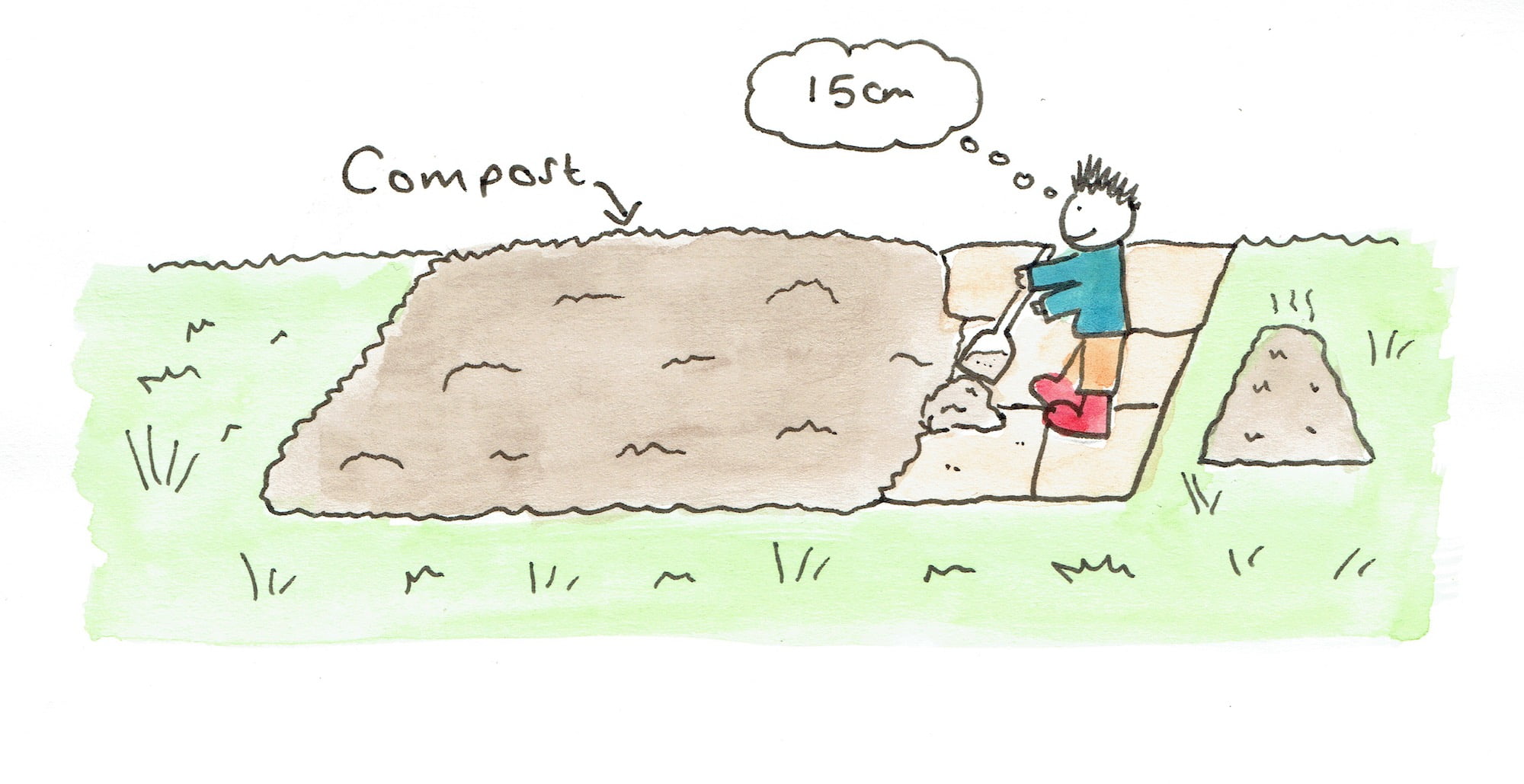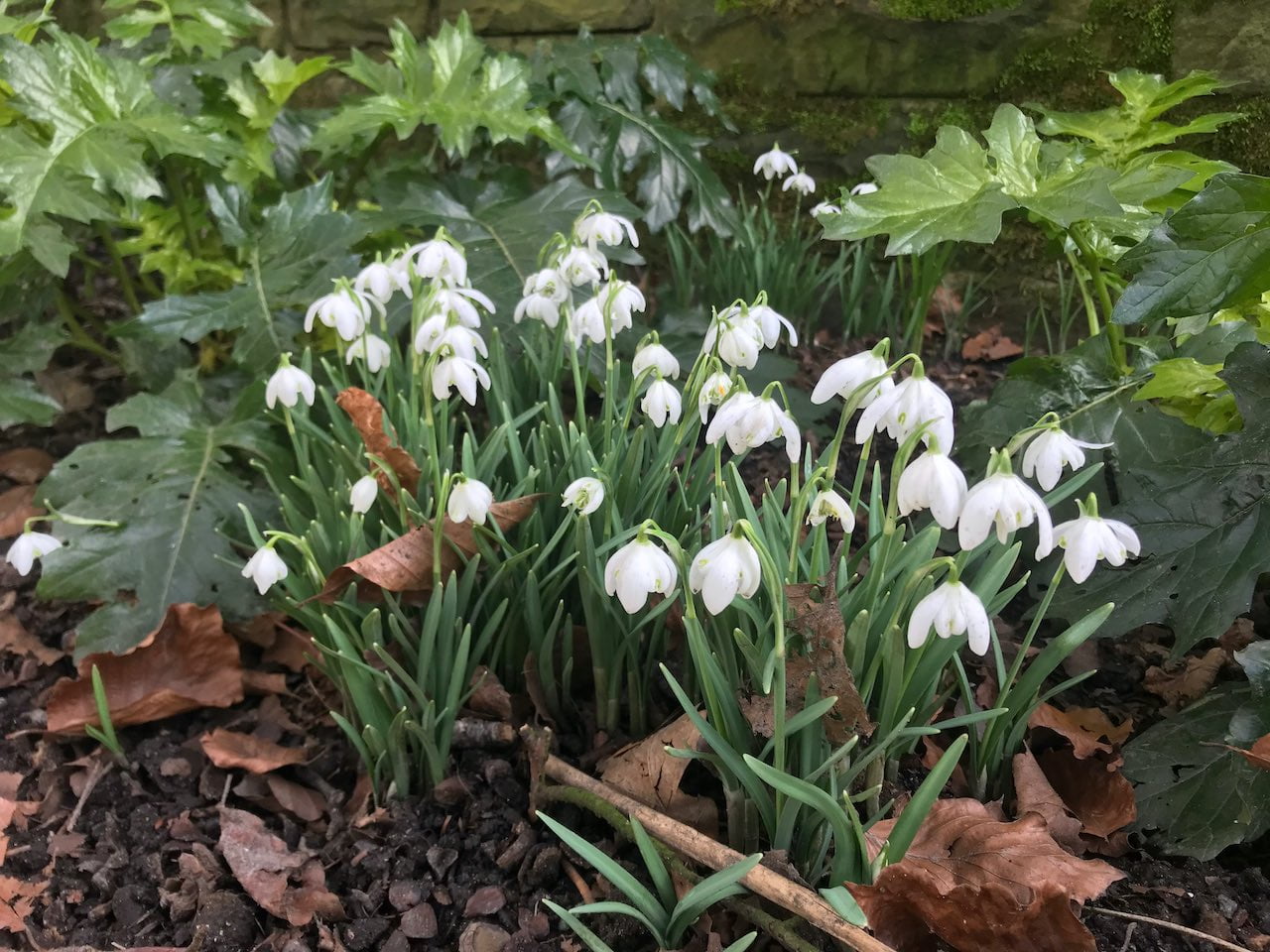Hi Eamonn,
Many thanks for this rather excellent comment! No dig is a fantastic way of organically gardening and reducing your workload in managing any garden. So congratulations!
For those who don't know what no dig is I'll give a brief explanation to help.
What is no dig gardening?:
No dig gardening relies on the principle of minimising disturbance to the soil. As soil is a living breathing organism, digging it repeatedly, especially in veg beds can damage the soil leading to more weeds, more effort and lower yields.
No dig uses a system of mulching the beds each year with a thick layer of organic matter such as peat free compost. This is layered up each year which helps reduce weeds and also add nutrients back to the soil. Plants and veg are planted directly into this top rich layer of compost. See below for my own illustration on No Dig gardening.

How quickly can I plant into a new no-dig bed?
The answer is straight away for small plants and seedlings! Once you've laid out your no dig bed, add a 2 to 3 inch layer of compost on top and then off you go.
For more established plants Eamonn I would wait until the cardboard weed suppressant layer has broken down or at least is soggy enough to tear. Then plant away. Remember that with a herbaceous flower bed once they are in you're not lifting them each year like vegetables so are less likely to damage the soil. No dig is great though when starting a new garden without needing to cultivate or rotovate the soil.
For bulbs, I'd actually plant them before the cardboard and compost as they usually need to be 3x the length of the bulb down in the ground. So most bulbs will push through the cardboard and compost to emerge. Just check what bulbs they are. Snowdrops only need 5cm so they can go into the compost, whereas daffodils and tulips need to go a good 6-8inches into the soil ie below the cardboard.

I hope that helps and good luck with the no dig bed!
Lee
Hi Eamonn,
Many thanks for this rather excellent comment! No dig is a fantastic way of organically gardening and reducing your workload in managing any garden. So congratulations!
For those who don't know what no dig is I'll give a brief explanation to help.
What is no dig gardening?:
No dig gardening relies on the principle of minimising disturbance to the soil. As soil is a living breathing organism, digging it repeatedly, especially in veg beds can damage the soil leading to more weeds, more effort and lower yields.
No dig uses a system of mulching the beds each year with a thick layer of organic matter such as peat free compost. This is layered up each year which helps reduce weeds and also add nutrients back to the soil. Plants and veg are planted directly into this top rich layer of compost. See below for my own illustration on No Dig gardening.

How quickly can I plant into a new no-dig bed?
The answer is straight away for small plants and seedlings! Once you've laid out your no dig bed, add a 2 to 3 inch layer of compost on top and then off you go.
For more established plants Eamonn I would wait until the cardboard weed suppressant layer has broken down or at least is soggy enough to tear. Then plant away. Remember that with a herbaceous flower bed once they are in you're not lifting them each year like vegetables so are less likely to damage the soil. No dig is great though when starting a new garden without needing to cultivate or rotovate the soil.
For bulbs, I'd actually plant them before the cardboard and compost as they usually need to be 3x the length of the bulb down in the ground. So most bulbs will push through the cardboard and compost to emerge. Just check what bulbs they are. Snowdrops only need 5cm so they can go into the compost, whereas daffodils and tulips need to go a good 6-8inches into the soil ie below the cardboard.

I hope that helps and good luck with the no dig bed!
Lee
 Lee Burkhill: Award Winning Designer & BBC 1's Garden Rescue Presenters Official Blog
Lee Burkhill: Award Winning Designer & BBC 1's Garden Rescue Presenters Official Blog



